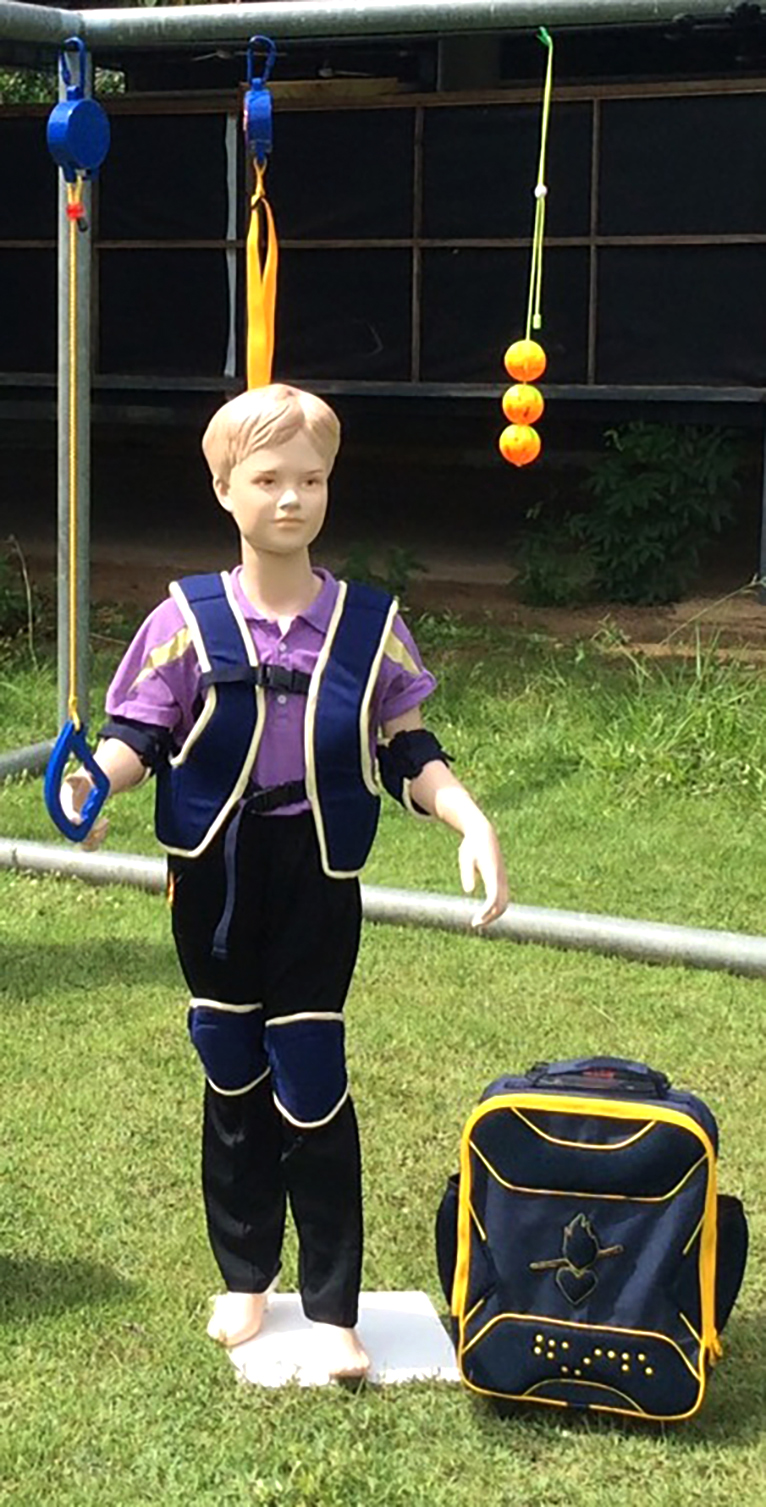Development of Learning Instruments for Improving Movement and Balance among Students with Visual Impairment at Thammikkawittaya School in Phetchaburi Province
Main Article Content
Abstract
In order to enhance the quality of life and maximize the potential of students with visual impairment, improvements are necessary. However, current exercise methods are unsafe as they lack specialized instruments designed for this group. Therefore, this research focuses on developing learning instruments to improve movement and balance among visually impaired students at Thammikkawittaya School in Phetchaburi Province of Thailand. The research process involved: 1) collecting data on the sample group and relevant individuals for further analysis, 2) analyzing the exercise patterns, movement, and balance of the sample group, 3) developing a set of integrated learning instruments to improve movement and balance skills for visually impaired students, and 4) summarizing the results. The set of learning instruments includes a full-body harness, an assistive device for stability and movement, and handles with hooks connected to a rope that is attached to a football goal post. The cost of this instrument set amounts to 13,390 baht, and the overall performance is rated as good. Students who used these learning instruments for improving movement and balance demonstrated a satisfactory level of physical fitness and were able to exercise correctly according to their physiological conditions, resulting in improved physical health. Furthermore, this research contributes to the knowledge of teachers at Thammikkawittaya School in Phetchaburi Province regarding appropriate exercise activities for students with visual impairment.
Article Details

This work is licensed under a Creative Commons Attribution-NonCommercial-NoDerivatives 4.0 International License.
Area Based Development Research Journal values copyright protection and licensing to safeguard author rights and facilitate the appropriate dissemination of research. Our policies ensure openness, accessibility, and attribution. Authors retain copyright ownership, and articles are published under a Creative Commons Attribution License (CC BY), allowing sharing, adaptation, and proper attribution. Authors have the freedom to publish under the CC BY license, granting broad reuse and distribution permissions. The journal supports posting articles on third-party repositories, adhering to institutional and funding restrictions. Author guidelines detail copyright and licensing requirements, empowering authors with knowledge about their rights and responsibilities. These policies cultivate an environment of collaboration, openness, and responsible sharing, benefiting authors and the research community while honoring intellectual property rights.
References
Chaiyamang, A. (2020). The development of movement skills of preschoolers, Chiangmai Rajabhat University Demonstration school, Mueang district, Chiang Mai province. Rajabhat Chiang Mai Research Journal, 21(3), 68-83. (in Thai).
Daokrachang, N. (2019). The effect of cycling-tube exercise program on muscular strength and endurance of children's wheelchairs with physical disabilities. Journal of Health, Physical Education and Recreation, 45(2), 87-99. (in Thai).
Hanmanop, S. (2019). Effect of hydrotherapy program and land based exercise program on quality of life in elderly. Journal of Safety and Health, 12(1), 12-23. (in Thai).
Harte, R. (2017). A human-centered design methodology to enhance the usability, human factors, and user experience of connected health systems: A three-phase methodology. Retrieved February 22, 2021, from: https://humanfactors.jmir.org/2017/1/e8/.
Imaram, K. (2005). Documents for teaching media courses and special equipment for visually impaired children. Bangkok: Faculty of Education, Suan Dusit University. (in Thai).
Jensantikul, N. (2022). Universal design: Concepts and characteristics of residential homes for elderly. Journal of Huminites and Social Sciences Mahamakut Buddhist, 3(2), 67-81. (in Thai).
Ministry of Tourism and Sports. (2023). The seventh national sports development plan 2023 – 2027. Retrieved April 16, 2023, from: https://drive.google.com/file/d/1_pngYme-ss9yoELkAIuNbuq6CM8B82oF/view. (in Thai).
Narinthon, P. (2000). Media and technology for the visually impaired. Bangkok: The Bangkok School for The Blind.
Rehabilitation of People with Disabilities Act B.E. (1991). Department of Empowerment of Persons with Disabilities. Retrieved April 10, 2023, from: http://web1.dep.go.th/?q=th/node/436. (in Thai).
Rungadulpisan, C. (2017). Study of results integrated activity, feeling (SI) that concentrates on cerebral palsy children. Thammasat University Hospital Journal Online, 2(3), 12-21. (in Thai).
Siphetrawut, S. (2007). Sensory integration. Faculty of Associated Medical Sciences, Chiang Mai. Retrieved April 20, 2021, from: https://home.kku.ac.th/autistic/th/images/stories/docandpdf/si.pdf. (in Thai).
Sukdee, N. (2019). Development of exercise program using sensory integration theory with Thai wisdom to improve health–related physical fitness and social skills of autistic children. Journal of Education Studies, 47(2), 150-168. (in Thai).
Thongat, T. (2010). Universal design. Retrieved April 10, 2021, from: https://www.bu.ac.th/knowledgecenter/executive_journal/july_sep_10/pdf/aw12.pdf. (in Thai).
Thongruay, R. (2001). A study of the visual perception ability of pre-primary low vision children from visual skills training activities using educational games. (Master's thesis). Srinakharinwirot University, Health Education and Physical Education. (in Thai).


